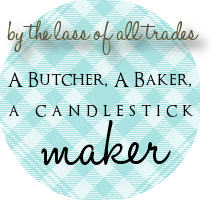"I listened, wide-eyed, stupid. Glowing by her voice in the dim light. If chocolate was a sound, it would have been Constantine's voice singing. If singing was a color, it would have been the color of that chocolate."
The Help.
It's a book I'd heard a deal about, a movie trailer that intrigued me, and a
subject I personally love: the life of colored maids in the
1960's. Perhaps it is the stories of Mama's housekeeper, Laura Bullock,
that always put me directly in sympathy with this sect of people.
Mama's family loved Laura and Laura was always an integral part of
their lives as children. I'll always remember the famous story of Grandmama
coming home to find Laura dressed out in a helmet and jacket with a gun over
her shoulder, doing drills with Uncle David who was only 5 or 6 at the time and
had asked her to play army. And I'll never forget what Laura told Uncle David as a
little boy:
"She's yo vanilla mama..." (nodding at Grandmama) "...but I's your choc'late mama."
Or what she would say when Mama was a little girl:
"Honey--you's fat, but you's purty!"
Bright in my imagination, too, is the family-legend of Laura's
rooster. How it'd drown itself every rainstorm by looking up at the sky with
his mouth open, and how Laura would shove it in the oven, heat it up till it
started flapping around, and let it back outside again.
I had the honor of meeting Laura several times as a little girl. I
remember being slightly intimidated by the warm pressure of her wrinkled,
leathery hand and her intent gaze, but I do remember liking her a deal despite
my fears.
All that to say, when a copy of Kathryn Stockett's The Help came into my hands and Sarah read it and told me I really needed to read it (High praise from Sarah!) I was ready. The general plot as described by the back of the book is as follows:
Aibileen Clark is a black maid in 1962 Jackson, Mississippi, raising her seventeenth white child. She's always taken orders quietly, but lately it leaves her with a bitterness she can no longer bite back. Her friend Minny Jackson has certainly never held her tongue, or held on to a job for very long, but now she's working for a newcomer with secrets that leave her speechless. And white socialite Skeeter Phelan has just returned from college with ambition and a degree but, to her mother's lament, no husband....Together, these seemingly different women join to work on a project that could forever alter their destinies and the life of a small town--to write, in secret, a tell-all book about what it's really like to work as a black maid in the white homes of the South...
What is there to say about this book except... Wow. I found myself laughing and crying alternately and sometimes simultaneously. As a writer I was astonished that this was Ms. Stockett's first novel. As a reader I connected deeply and intimately with the characters. As a white woman, I blushed over the treatment the black maids received and prayed that, had I grown up in that era, I would have been different than Hilly and Elizabeth and the other Jackson women.
This book is so full of emotion, so full of complex relationships, so full of truth and goodness and a realization of the common-ness of humanity that I found myself marveling that any author could boil it down and smash it between two covers.
"I don't know what to say to her. All I know is, I ain't saying it. And I know she ain't saying what she want a say either, and it's a strange thing happening here cause nobody saying nothing and we still managing to have us a conversation."
The characters are alive, the events poignant, the realizations touching and sharp-edged. I enjoyed the choice of "first-person, now narrative" for a fresh reading experience as well. I love the immediacy of it. The novel took me from looking at The Help as a historical-fiction and brought me winging back to 1960, and it flighting forward to 2012 and we met somewhere in the middle and had a heart-connection rare to find in today's helter-skelter thriller-fiction-craze. Kathryn Stockett tells it just like it was. She didn't assign all evil or all goodness to one side of the racial argument or the other. But she didn't sugar-coat anything. And I mean anything.
That's the only complaint I had about The Help. The author included quite a lot of language which--if it did help the ink-people come alive--presented lots of words in my mind that aren't usually there for good reason. One of the main characters is definitely not a Christian and speaks rather mockingly of it sometimes. There are two scenes I can think of that could have been toned down. One, I actually liked the raw, pithy emotion and horror of--the other I thought was a little graphic. That--along with the fact that the whole subject of the plot is a little weighty for younger readers--puts my recommendation for The Help at 18+. If you are 18 years of age or older and want a book that'll take your by the shoulders with warm, brown hands and shake you gently with strong, supple fingers that smell of dryer sheets and cake frosting, read this book. You'll never regret it. Never-ever.
*WARNING* In Chapter 24 there is a really creepy part that is described too graphically. Really, you'd not miss it if you skipped it. So read with caution or skip pages 360-365 entirely. :)
*WARNING* In Chapter 24 there is a really creepy part that is described too graphically. Really, you'd not miss it if you skipped it. So read with caution or skip pages 360-365 entirely. :)
A teaser-taste for you:
"We go on in her room, where we like to set. I get up in the big chair and she get up on me and smile, bounce a little. 'Tell me bout the brown wrapping. And the present.' She so excited, she squirming. She has to jump off my lap, squirm a little to get it out. Then she crawl back up.That's her favorite story cause when I tell it, she get two presents. I take the brown wrapping from my Piggly Wiggly grocery bag and wrap up a little something, like a piece a candy, inside. Then I use the white paper from my Cole's Drug Store bag and wrap another one just like it. She take it real serious, the unwrapping, letting me tell the story bout how it ain't the color of the wrapping that count, it's what we is inside."












I haven't read the whole thing, but one thing of the things I noticed, is that even when she's describing a garden, or something else... even when it's just a description (which can sometimes be boring), it still holds your attention and means something. There's a reason why she's describing that particular thing; so that you'll know more about one of the characters. :)
ReplyDelete